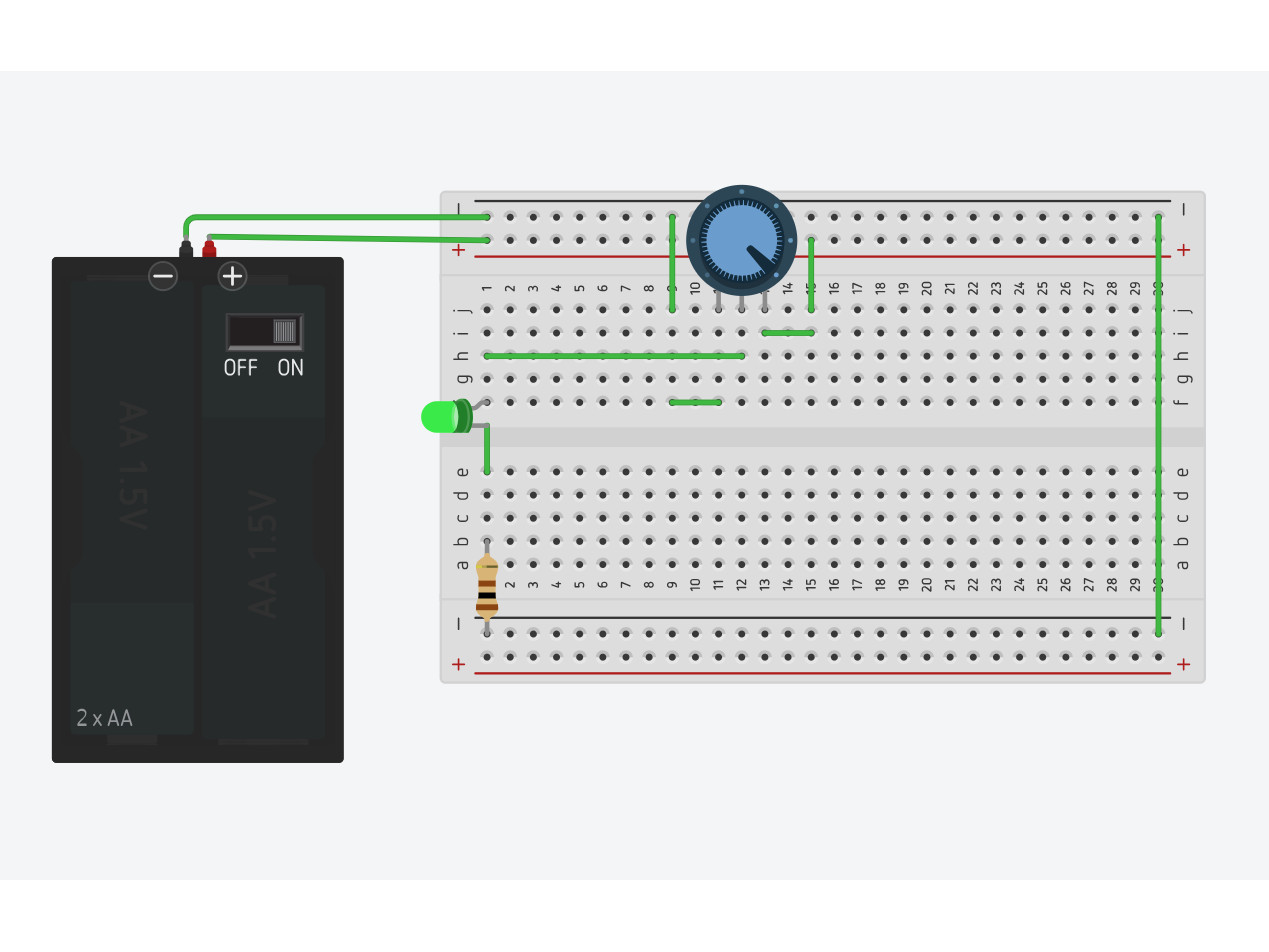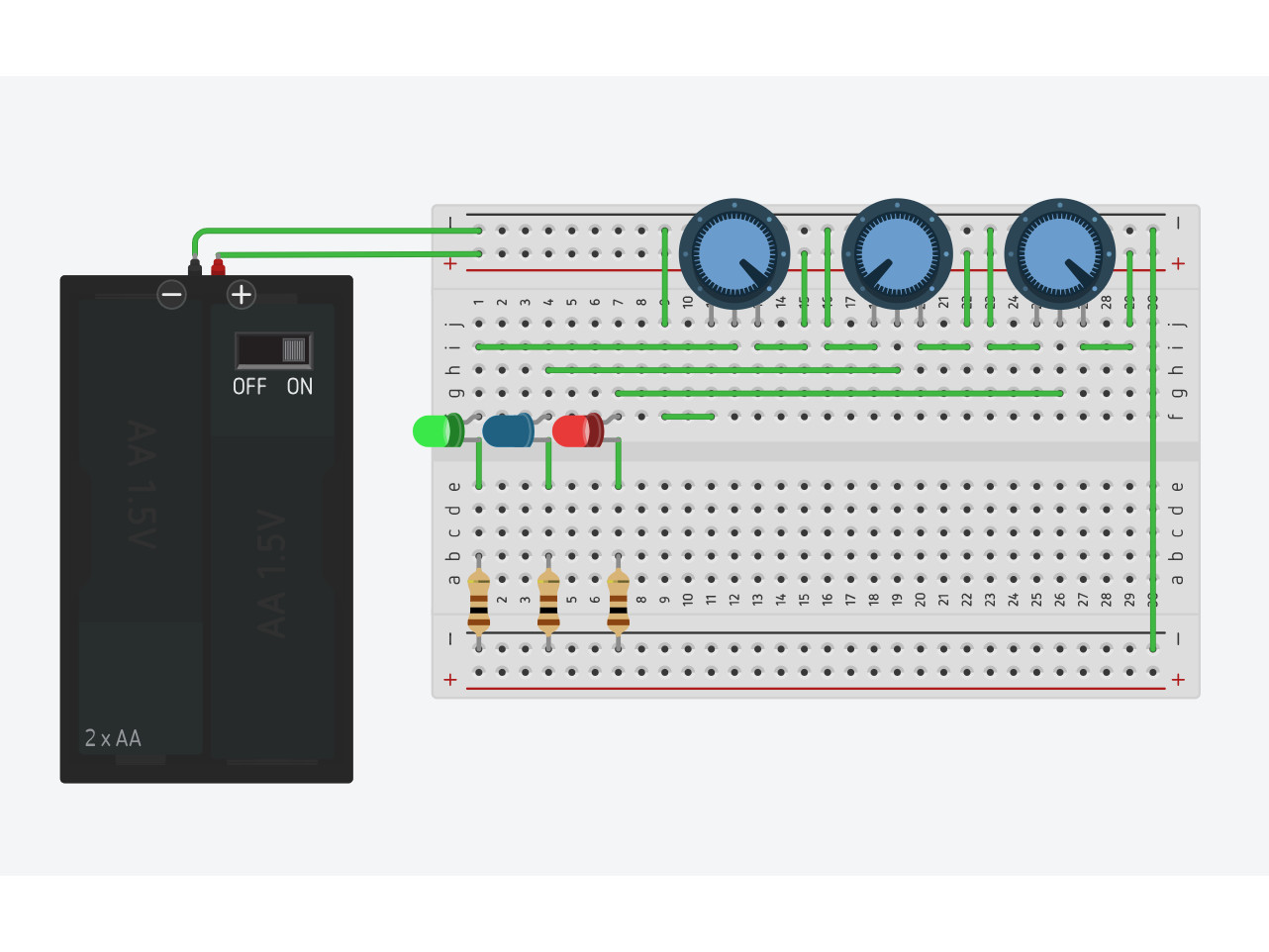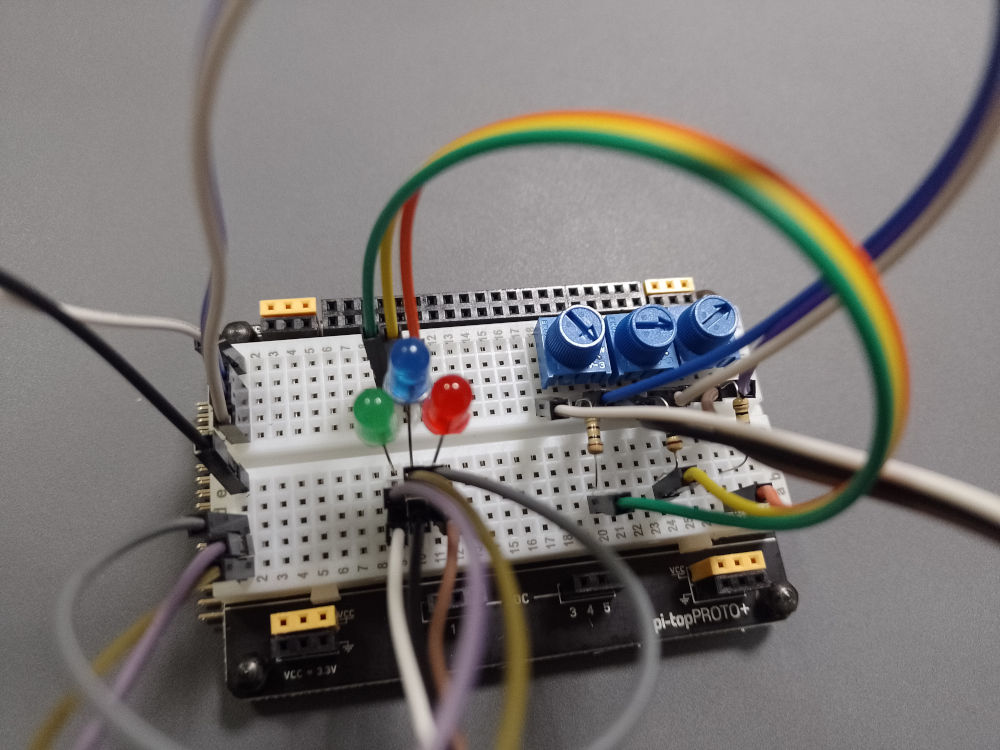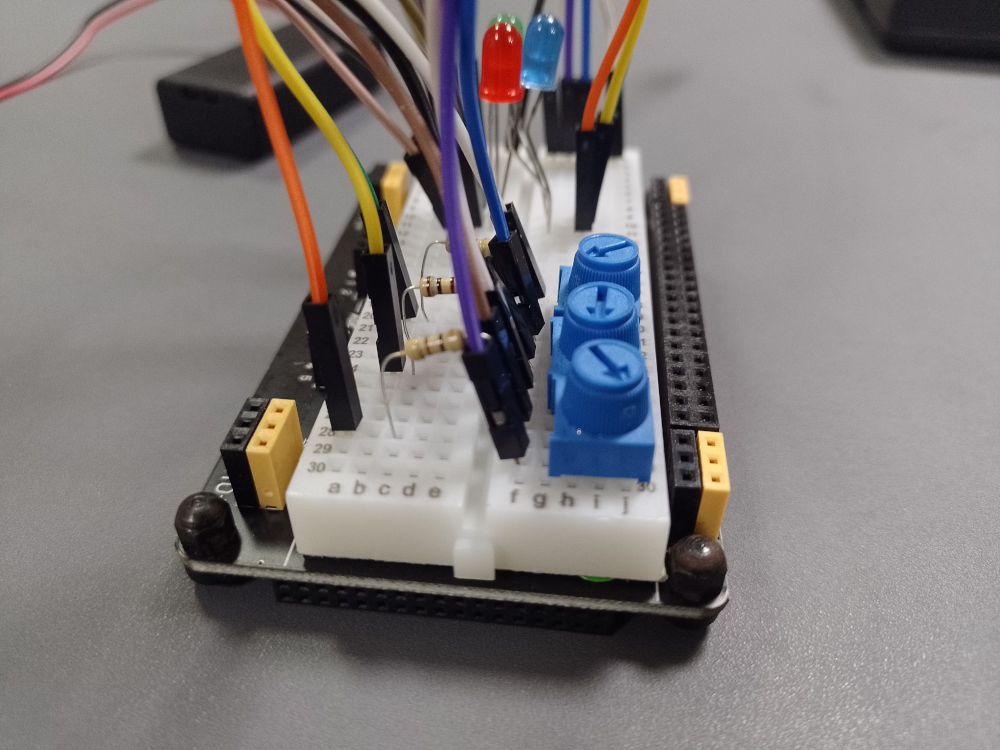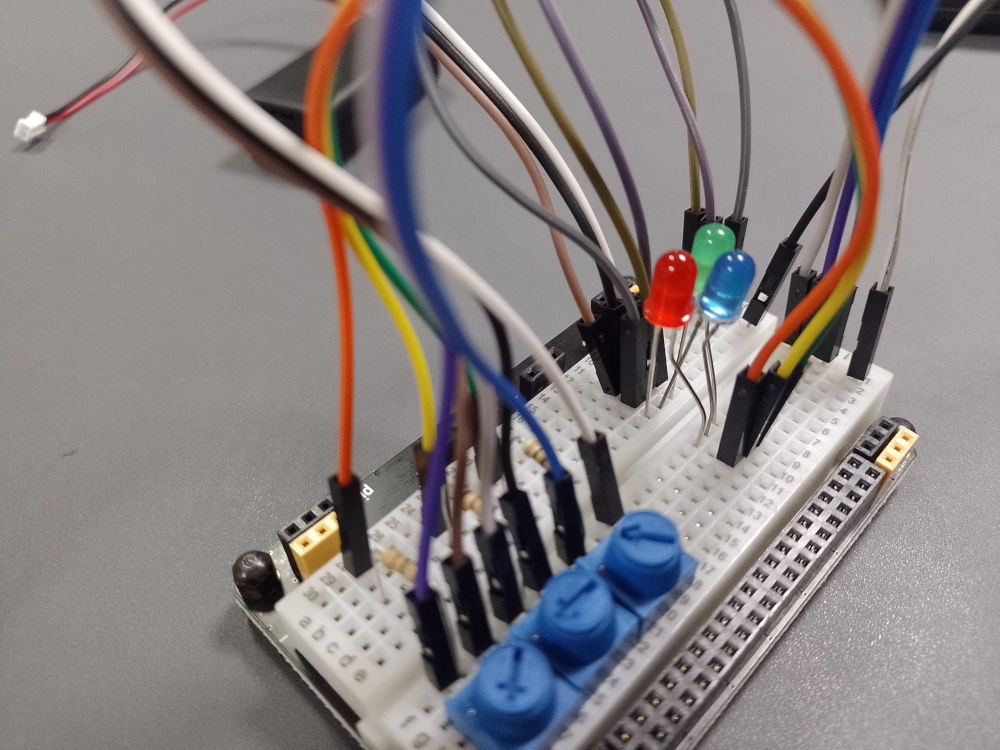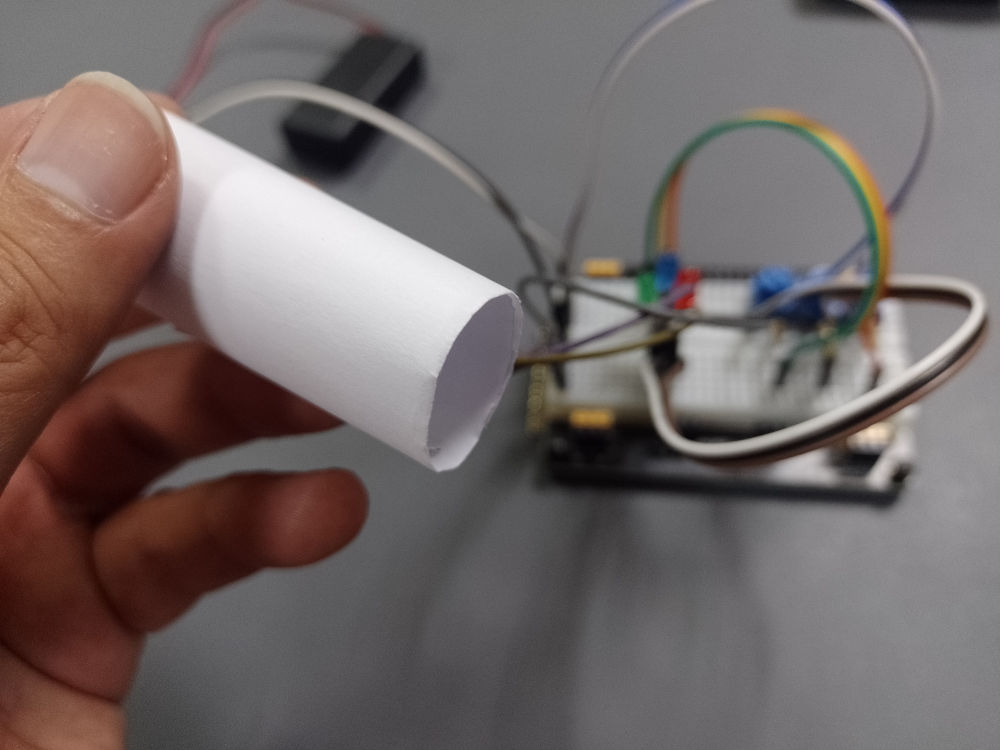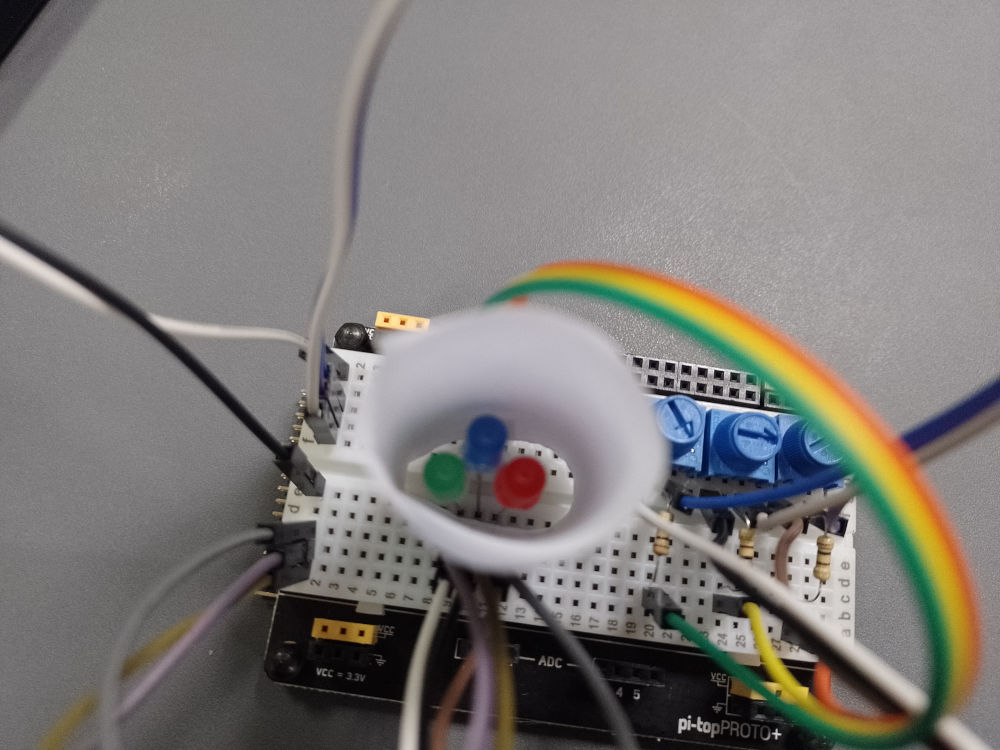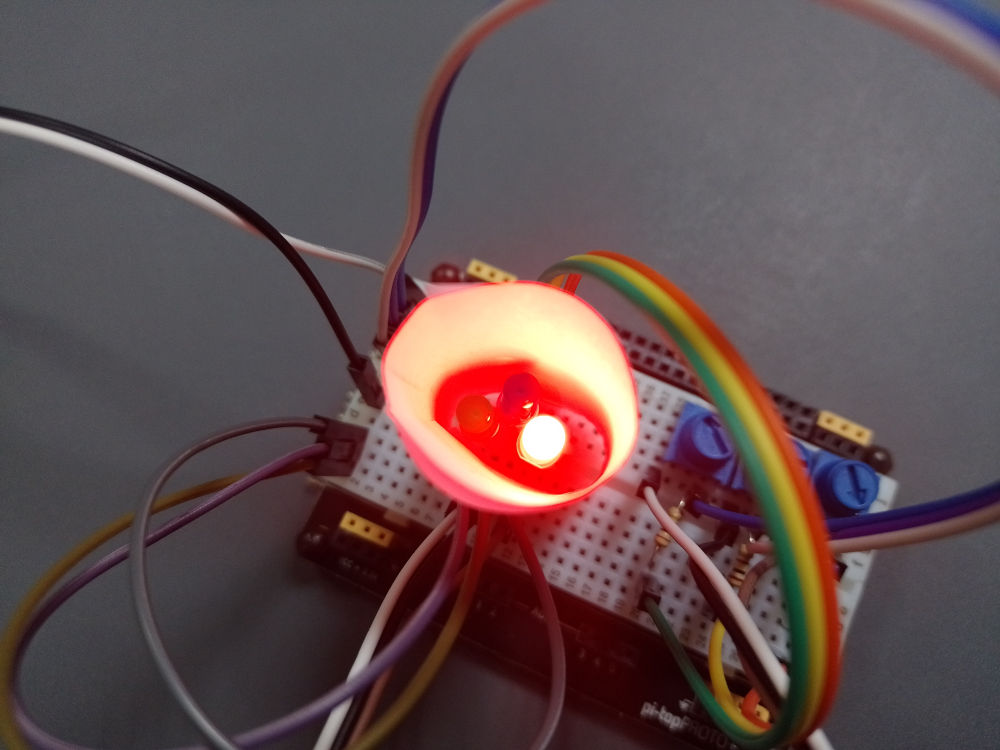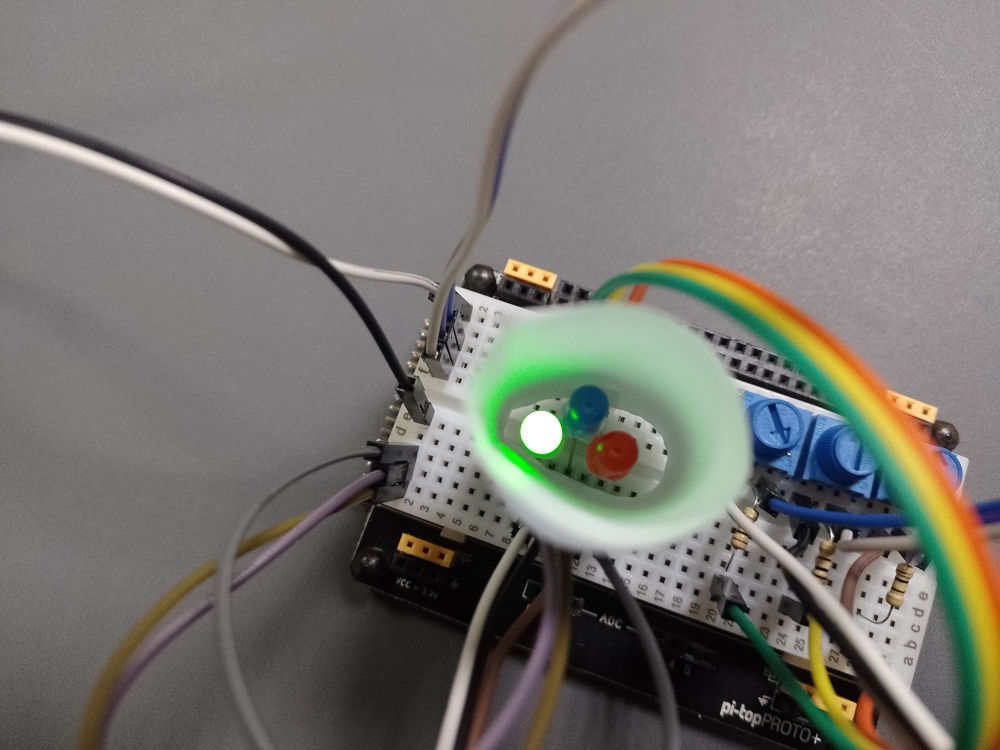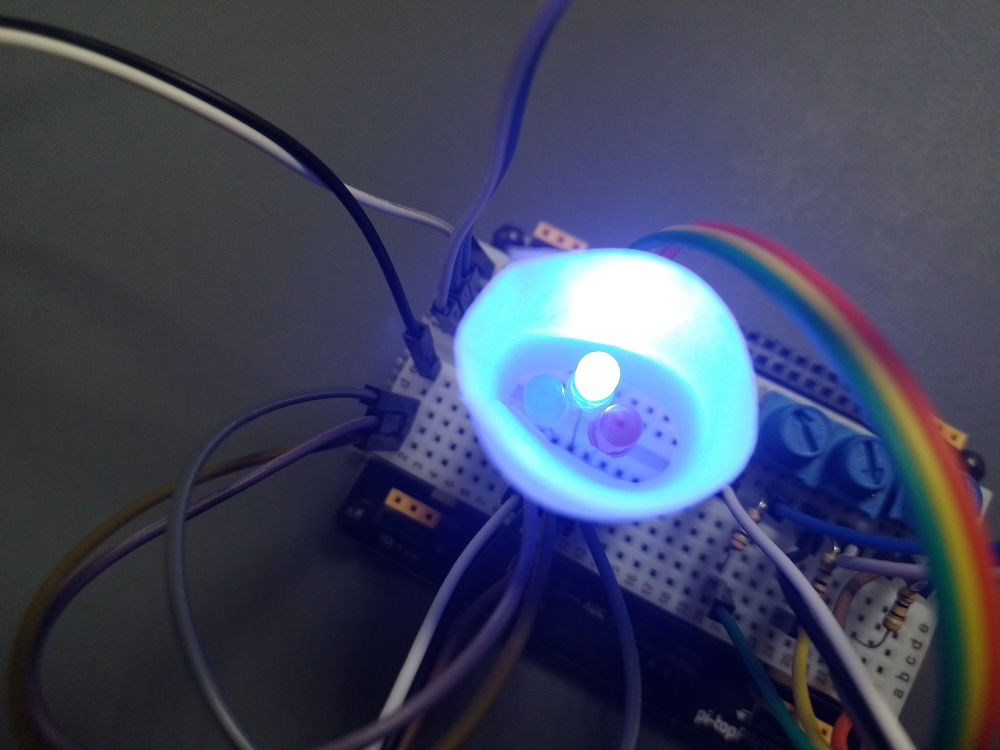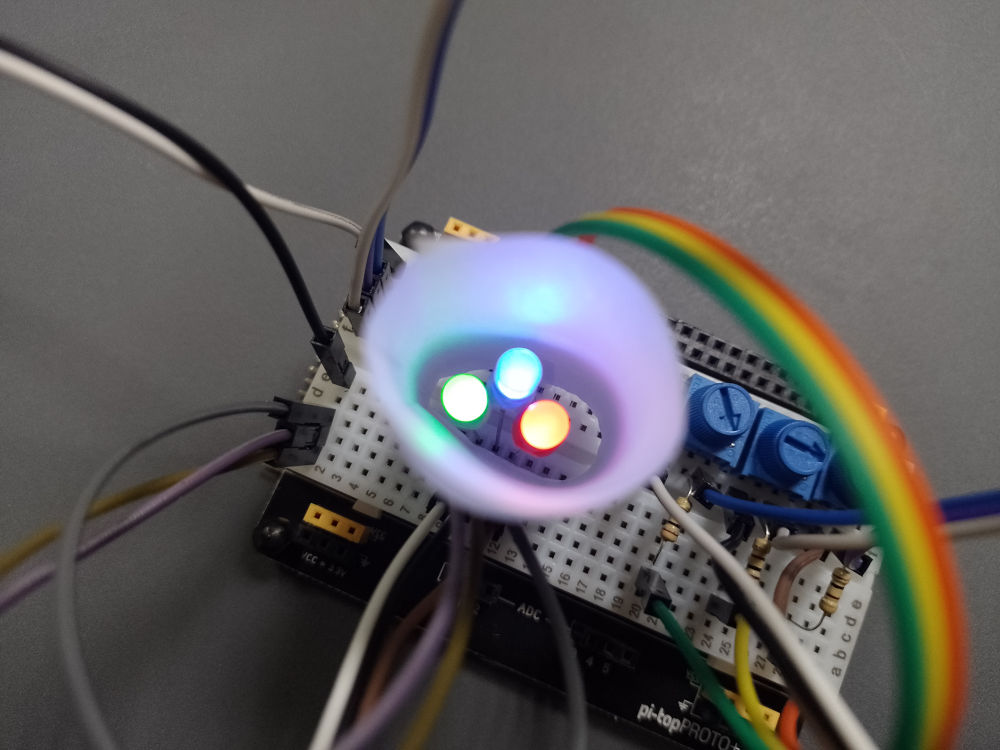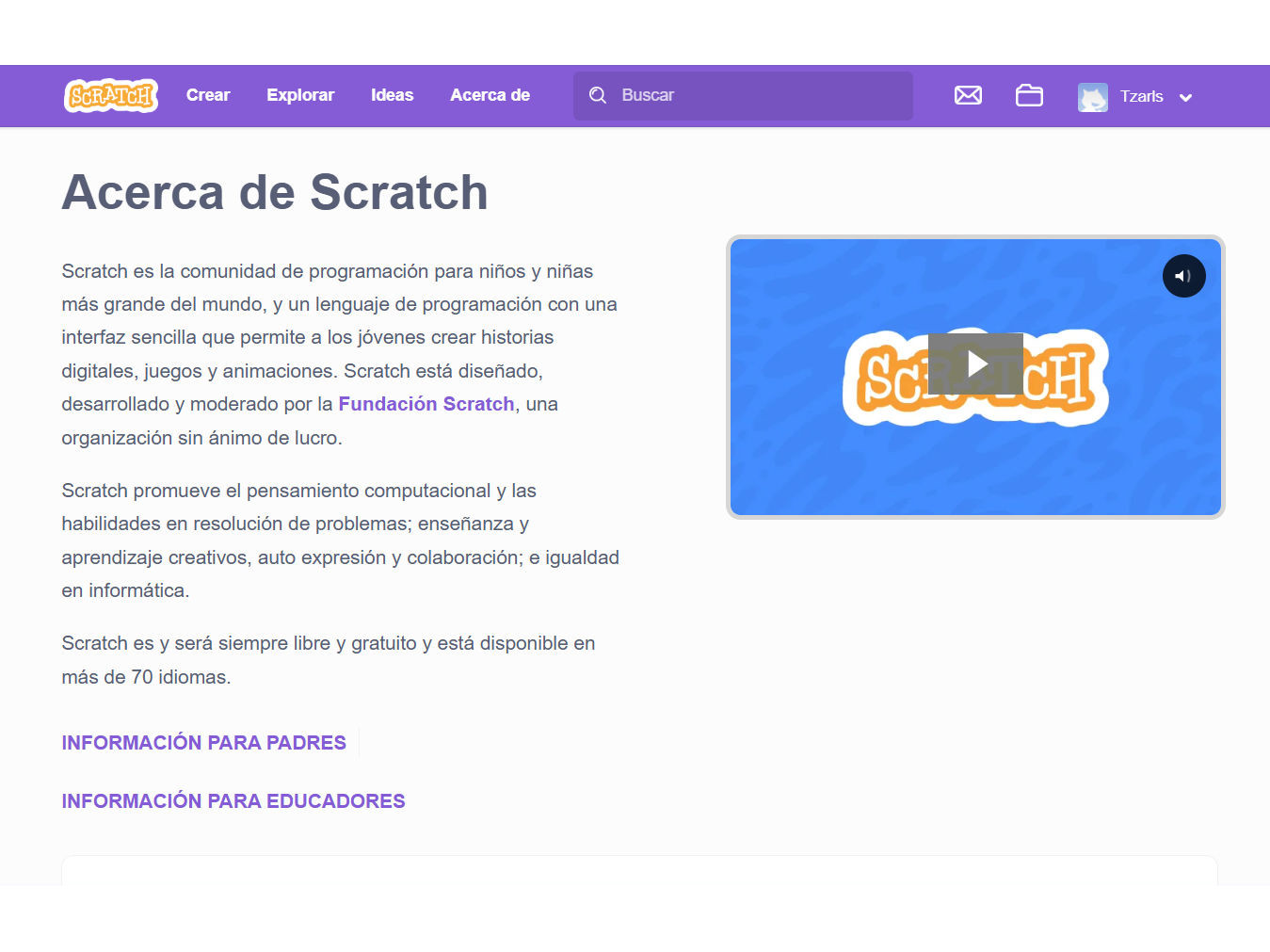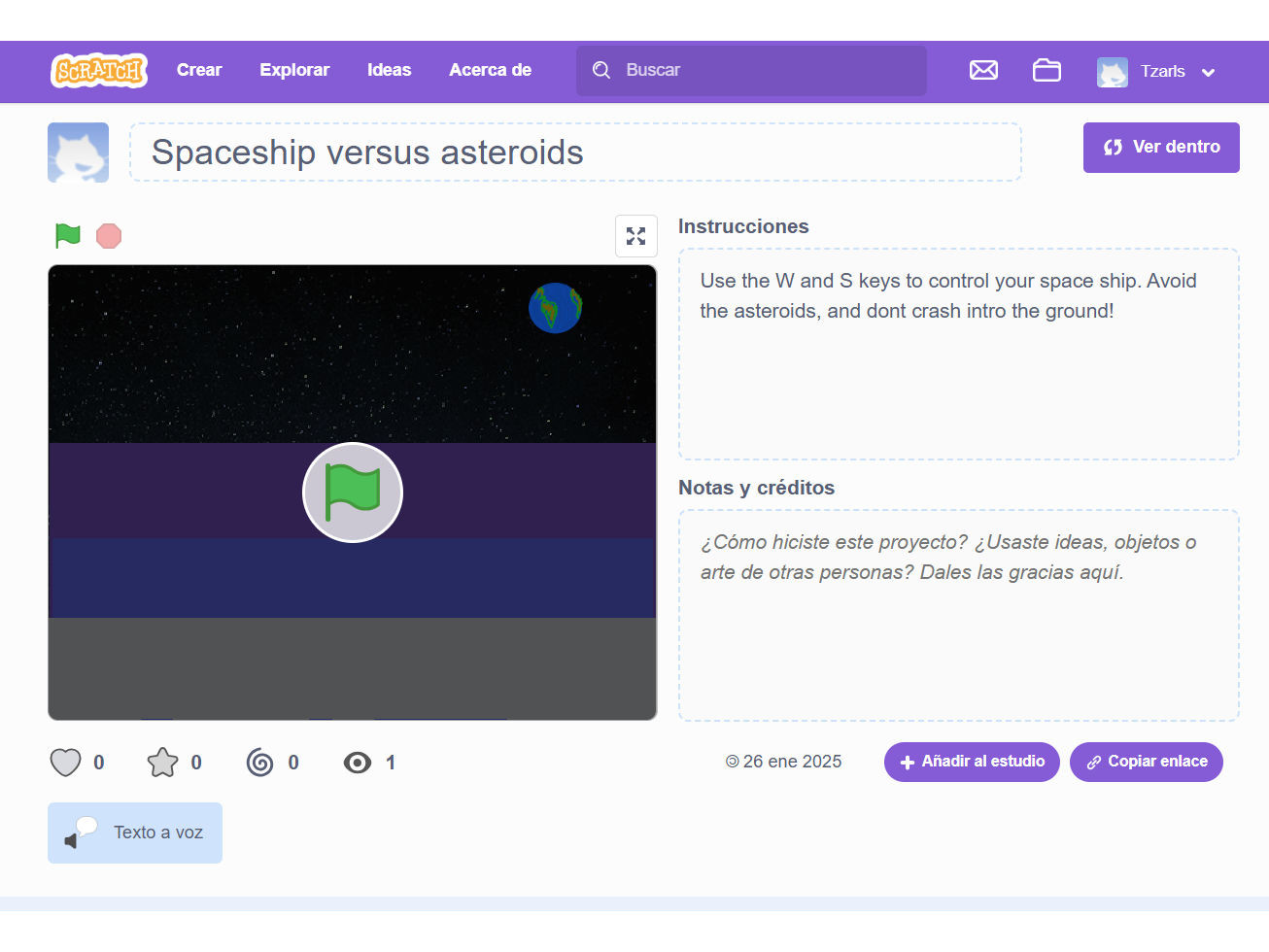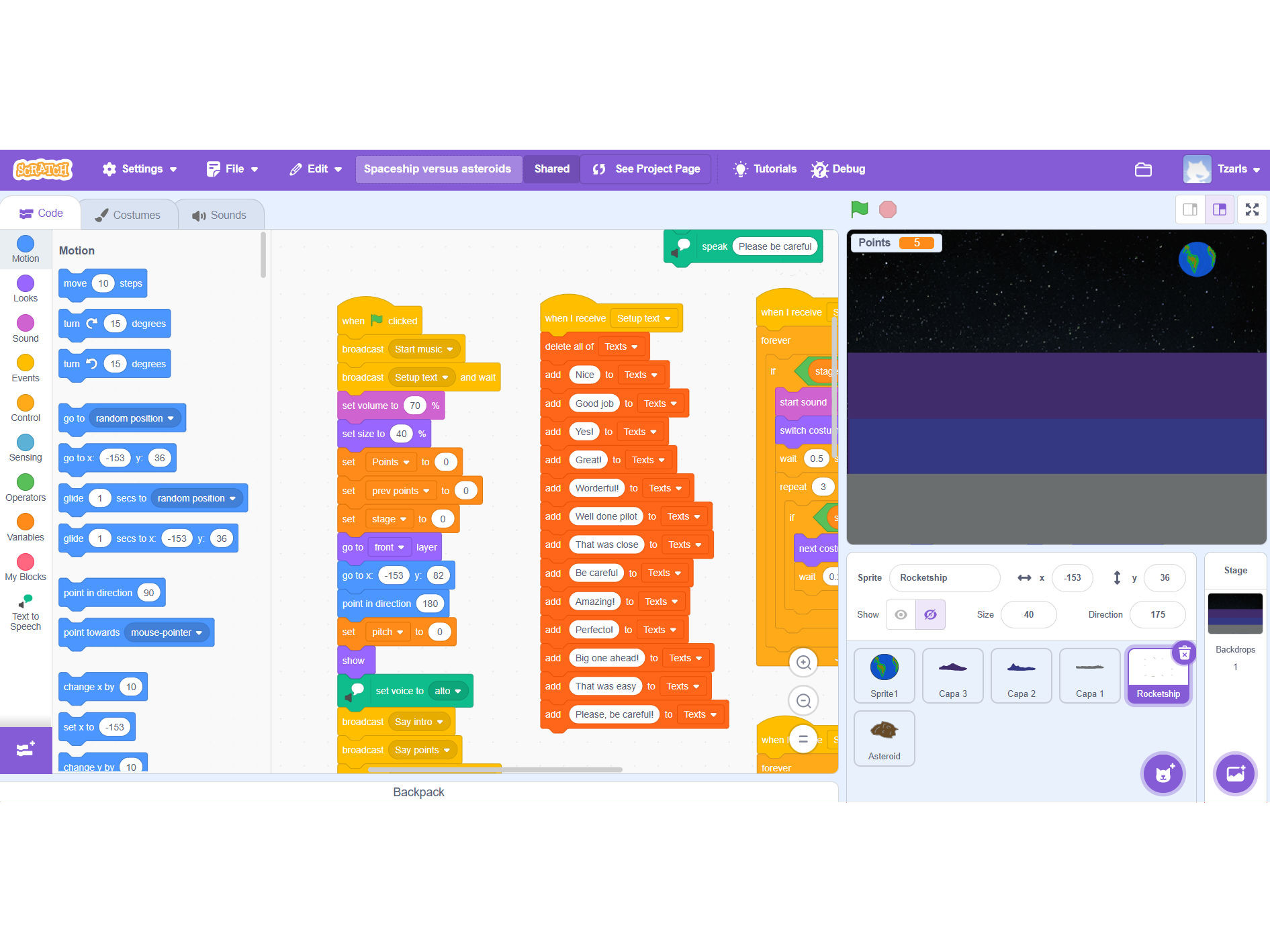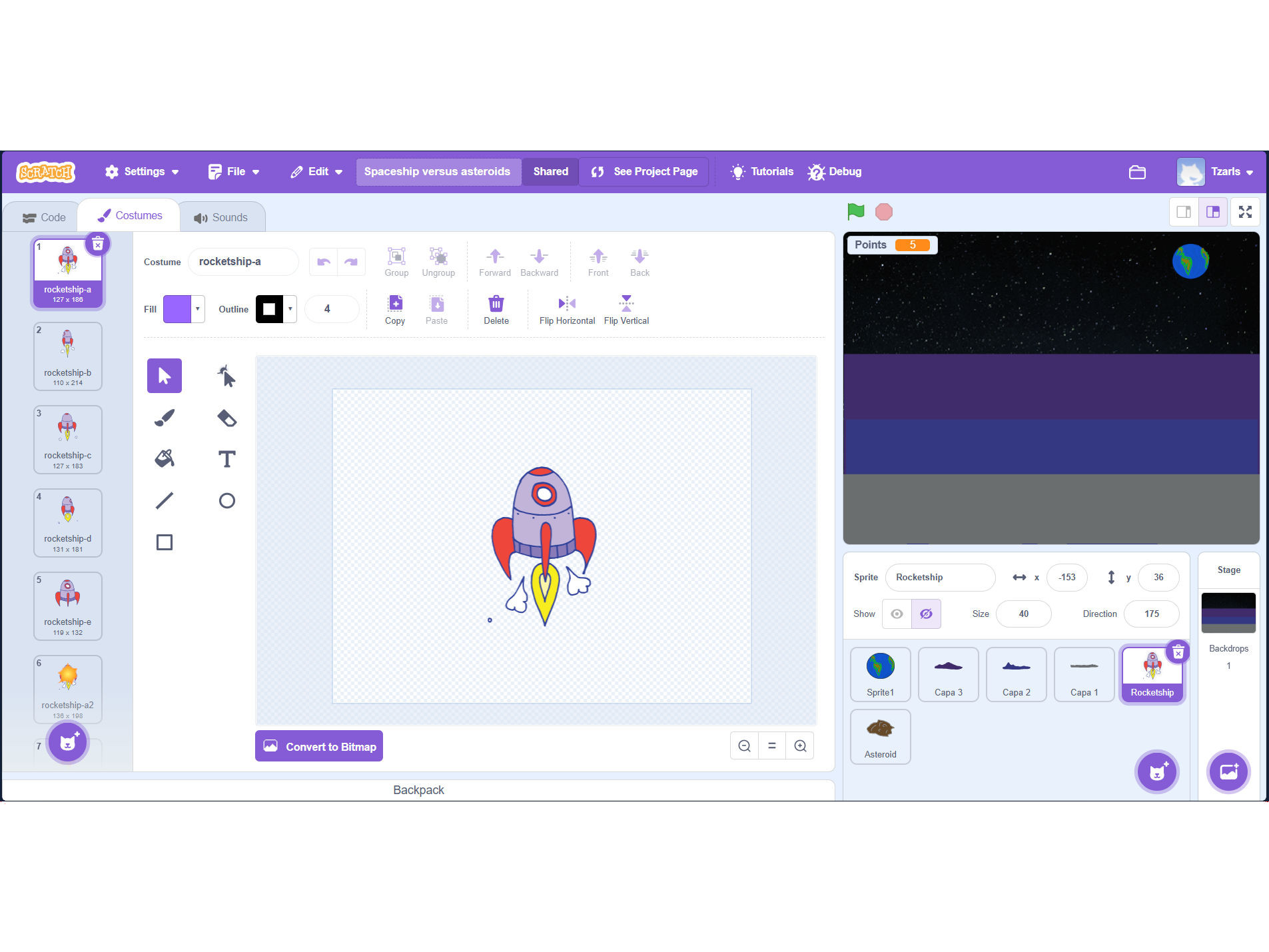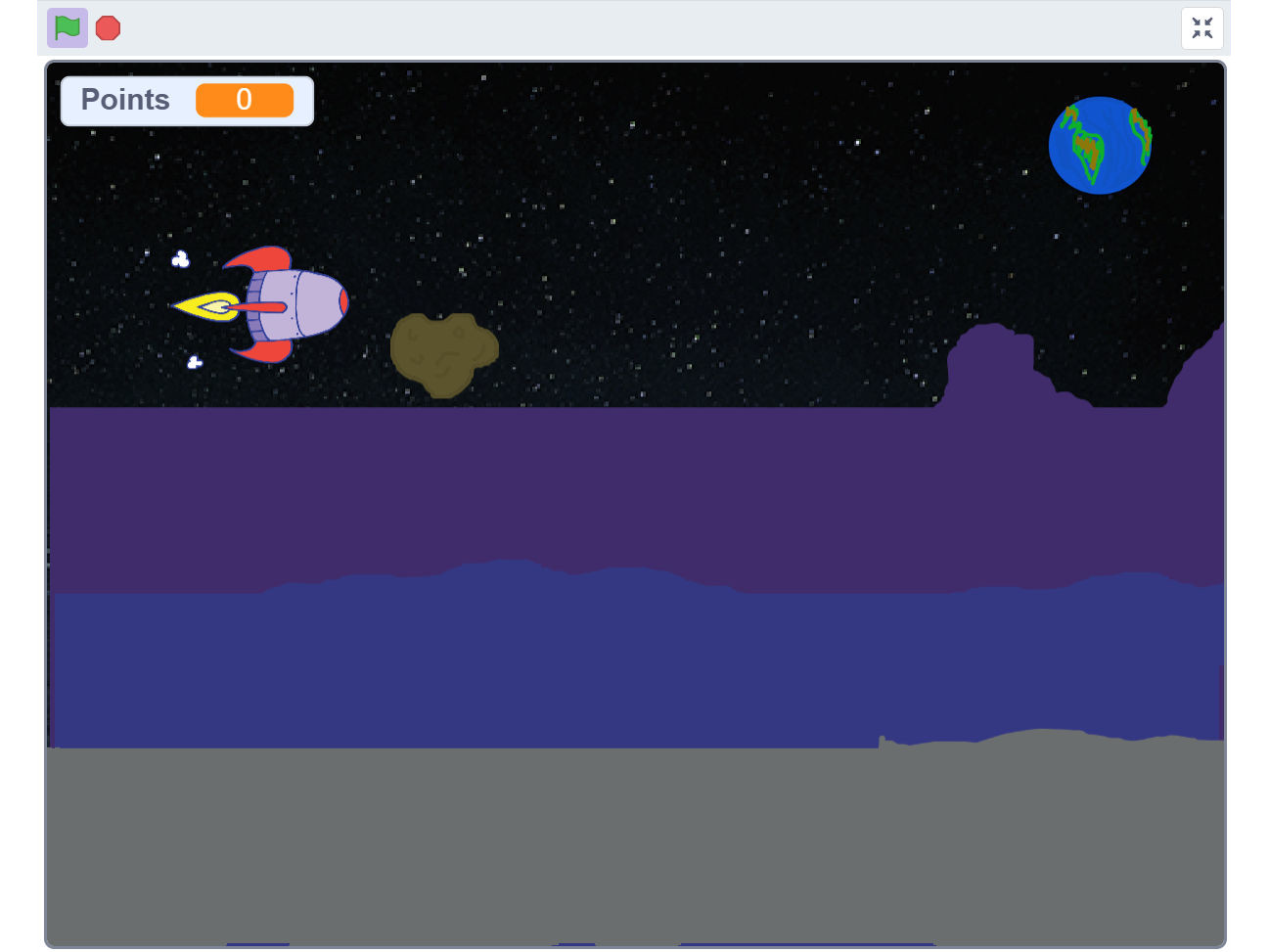3_ Diverse classrooms: digital fabrication for all
How to integrate electronics, programming and digital fabrication to create more engaging learning experiences.
For this week's asignment we were asked to design an eeducational activity using simple electornics components. For this purpose I created a circuit based on the idea of an LED dimmer. This is basically a potentiometer connected to an LED as a way to control the amount of current delivered to it. By varying the current, the potentiometer lets us control the brightness of the LED.
To replicate this circuit all you need is an LED, a 100 Ohm resistor, a 10 kOhm potentiometer, a breadboard, some wires and a 2 AA battery holder. A picture showing how everything is connected is shown in the picture slider below.
By repeating this simple pattern and changing the color of the LEDs to be red, green and blue, we have a circuit that shows how it is possible to combine those three colors to create any other color imaginable - even white!
Below you can see the result you get when using this circuit to combine the lights of the different LEDs.
Reflection questions
-
What are the challenges of using electronics in your space? How can you design an activity using electronics that takes into accounts your children age and cultural backgrounds?
This kind of activity is not totally strange for my workplace. Even though we usually work with micro contorller boards and modules made for rapid prototyping (which enable even young students to create complex systems), single components and electronics modules are also available, in case students need or want them. Many times the projects they develop are proposed by them, or have a strong personal component, and this gives them both the motivation to overcome the difficulties that will appear and the opportunity to use technology as a way express their own views and opinions about the world, society and how to face the world they live in.
-
Explain one successful educational activity in which you collaborated with other educators. What are the advantages and disadvantages of working with other educators? What are the main aspects to take into account to prepare an education activity among 2 or more educators?
The activity is designed so students will build plant vases that are going to be used to test Carbon-Dioxide capturing paint. Students will design and build their vases taking into account aesthetic considerations but also technological ones, since each vase has to be equipped with sensors to measure Carbon.Dioxide levels. Ther vases will be treated with the mentioned paint, except a small gorup that will be taken as the control group. For a certain period of time students will have their vases collect data and in the end they will compare it to try to understand the real impact of the paint on the levels of Carbon-Dioxide found on different spaces of the school. This activity was done with one of the Science teachers of the school.
One of the main advantages of working together with other educators is that the projects that can come to life from those interactions are always larger (and more intersting) than just the sum of the views, ideas, activities and capabilities that come from each of the ones involved. Of course, it takes time and it is not always easy for everyone to work with people that don't share their views or accept their ideas!
Regarding aspects to take into account when preparing a collaborative activity, I'd say time, anicipation, being open to listen to other's opinions and the ability to let go one's vision in order to accomodate everyone's ideas.
-
How could you integrate both culturally reflective learning and digital fabrication in your environment? Could you come up with some project ideas using digital fabrication in which cultural diversity of students is highlighted?
I would think about students building objects that reflect family or cultural heritage. Things like:
- Laser cut traditional masks
- 3D printed or laser cut ornaments like pendatns, chest tpieces or even ceremonial objects
- Maps with artifacts representing cultures of the past
I'd also thik about having an installaton to show these elements to other members of the community.
This week we had to design and implement a simple quiz or videogame.
The game I created is a very simple one in which you control a space ship on its way across an asteroid field. Your main goal is to survive as long as you can, avoiding asteroids and trying not to crash into the ground. There are only 2 controls for the ship: the keys "w" and "s". "w" pushes the ship towards the ground and "s" pulls it to the sky. But be careful! Ths ship is not an easy drive!
For implementing the game I used Scratch, an online platform and block programming language made for people to get their hands on programming as easily as possible. I considered using other languages such as Python or even C++, but I have very little experience with making games on those, so in the end Scratch seemed like the right choice for this task. All of the assets used in the game are either made by me or are part of Scrath's asset library, be it graphics or sounds effects and music.
My original idea was to make a clone of a very old game called "Lunar Rover Patrol" which I used to play in the 80's on my old TRS-80 Color Computer II. I loved how it created the illusion of depth by using different layers of graphics scrolling at different rates. I wanted to recreate that illusion but also add some sense of speed. While making the game I playd with some ideas and ended up replacing the rover with a space ship, and then one thing led to another...
So, without further ado, here is the game: Spaceship versus asteroids!
Use the "w" and "s" keys to drive the ship. Avoid asteroids and don't crash into the ground!
Clic on the green flag to start the game
If you want to visit the project's page and have a look at the code used for the game, please clic on this link.
One of the main challenges on this game (and any game I'd say) is to tune its difficulty level to make it easy enough to enjoy playing it but difficult enough for it to be a challenge. In this case I've looked for a balance between the speed of the asteroids and the speed and size of the ship. I think there is still a lot to be done and I have lots of ideas on how to improve gameplay, but for now I wanted to keep it simple and fun, and I think I've achieved that goal.
Reflection - Taking diversity into account
I've had the opportunity to talk with my students about how people are all different and just as they have different opinions or preferences, they also have different needs. We also talk about the importance of getting our needs known and recognized in order to be taken into account when designing "the world", be it a building, a house, a transportation system, an entertainment device or some class material. In this regard, I once had some students that I didn't know where color blind. Until that day, and without knowing about their condition, I had been using different color schemes to highlight certain information on the slides I use in my class. Of course what I thought would be an aid for my students ended up being a barrier for them. From then on I've always tried to learn about the needs that my stundets have. That way I can try to make my class material as universal as possible. This applies to programming classes but also to DF sessions: knowing what the students need to feel comfortable, to be able to get the information they need for the activities or the support they need to be able to reach the goals makes the process more enjoyable and fullfilling for everyone.
All of this applies to any learning environment, regardless of the topic being developed. Do I really need to have all of my students program games or build robots as part of my programming classes? Is the goal "bulding robots"? Is it even "learn a programming language" or is it "develop thinking and problem solving strategies"? Do they all need to learn to model in 3D or use a vector graphics program? Or is it better for them to be able to recognize the power of those technologies and be able to decide when a certain technology can be used and when not? When assesing their work, I think it is very important to keep in mind that not everyone has the same interests, and that we are not looking to have a classroom full of "one model of student", but to ensure that we are indeed helping them develop their own personal strengths and interests. Assesment shouldn't be "have you done whay I asked you to do?" but rather "have you approached the problems you have faced as part of your learning process in such a way that you have ended up developing strategies to solved problems, become conscious of your errors and made all necessary adjustments in order to improve whatever solution you were proposing to solve the given problem?" I think this is not about "do you know how to use a 3D printer or a laser cutter" but more about "can you recognize what you need to do on every opportunity, and learn how to use what you need when you need to use it?"
For the Field Activity of this module we were asked to design an electronics or programming-based lesson plan, along with the assessment tools. Our plan was to be tested to receive feedback. And the activity should include electronics components and/or basic programming elements.
You can find the lesson plan for this activity using this link.
As a summary, my lesson is based on building a small electronic device that will act as a "matching game". Students will gather information about a certain topic and the build the game using that information. They will build all the electronics, wire everything to works as expected (depending on the topic selected) and then test and (if needed) debug the circuit. Since the elements used for the "matching" part of the circuit can vary this lesson plan can be applied to a broad variety of subject areas, no only those related to technology.
The example I prepared is aimed at exploring human senses and identifying what elements of the physical world our biological sensors can detect. This will be used on the next module as a basis for exploring digital sensors and its limitations but also advantages over our own sensory systems.
Here I share a small video showing the finishd build and a quick test to better understand what it is supposed to do. All details regarding the construction of this device can be found on the Scopes document posted above.
For assesing students understanding after the activity, I propose the following assesment tool:
Technical understanding and skills
| Assesment type | Expected outcome | Bloom level |
|---|---|---|
| Observation and monitoring during the building phase | Students correctly connect components and demonstrate understanding of the basics of elctronics circuits | Applying, Analyzing |
| Build plan | A step-by-step guide with instructions on how to build the system. It must include a description of the components and their role in the circuit, and a checklist to ensure that every parrt of the process has been completed succesfully | Applying |
| Reflection log | Students explain how and why the circuit works, along with the problems that can be found and how those problems can be typically solved | Understansing, Evaluating |
For the example given in the Lesson Plan, I will also propose the following tool for subject-specific knowledge (sensory systems)assesment:
Subject-specific knowledge
| Assesment type | Expected outcome | Bloom level |
|---|---|---|
| Matching justification sheet | Students explaing why each of the pairs they have defined for the game matches | Understanding, Evaluating |
| Presentation | Students present their games to their peers and explain the matching logic behind each pair | Understanding |
| Design log | Students document the selection of items (terms and images) for the pairs on their games. They also include wiring plans and final decisions for their designs. | Creating, Analyzing |
This activity is aligned to the following competencies of the peruvian National Education Curriculum:
-
Area: ICT (Cross-curricular Competency)
Competency 28: Effectively navigates virtual environments generated by ICT. This involves the student interpreting, modifying, and optimizing digital environments to create objects, collaborate, and manage information.
Associated capacities:
- Customizes virtual environments.
- Manages information within virtual environments.
- Interacts in virtual environments.
- Creates virtual objects in various formats.
Learning standard for Cycle VII (Secondary):
“Effectively navigates virtual environments by optimizing their strategies for participation, creation, knowledge construction, and expression of individuality…” -
Area: Science and Technology (for the example given in the activity)
Competency 22: Designs and builds technological solutions to solve problems in their environment.
The student is capable of constructing technological objects or systems based on scientific and technological knowledge, responding to contextual problems with creativity and perseverance.Associated capacities:
- Determines a technological solution alternative.
- Designs the alternative (structure, functionality, requirements).
- Implements the alternative (assembles, tests, and verifies).
- Evaluates and communicates the functionality and impact of the solution.
Learning standard at the end of Cycle VII (Secondary)
“Designs and builds technological solutions by justifying the scope of the technological problem and its possible solutions based on scientific knowledge... Verifies functionality and makes adjustments.”
Feedback
For feedback I shared my lesson plan with a oclleague of mine, who is the former Science counselor for my school. She broguth up some interesting points and during our conversation we also came up with some good ideas to improve the Lesson Plan. Here's a brief list of her feedback and the ideas we came up with:
- She liked the activity, and she decided she will be doing it with their students so they create some concept matching boxes for her students with Down's Syndrome. She told me that what she has found is that these students have an easier time learning when words are matched to images.
- We found that there is an opportunity to impove this model by including Braille as part of the elements to me matched, and add a buzzer to the circuit. That way, when there is a correct match there will be not only visual feedback but also acoustic feedback. This will make the device suitable for students with visual impairments. And as an activity this will also brign to the table the idea of diversity as part of the design process, or, in other words, "design with everyone in mind".
- She suggested some changes to the terms used, such as "enumerate" to "relates".
-
She suggested adding physics related objetives to the list of learning goals. She specifically mentioned:
- Relates the behavior of the circuit to the concepts of conductivity, electrical energy, and energy transformations.
- Explains how energy flows in an electrical circuit.
Reflection questions
-
How did the integration of electronics/programming enhance the learning experience?
Because of its nature, electrnocis create the prefect environment for hands-on learning. Students learn by making, and can get instant feedback when testing their circuits. It also provides a good setting for building troubleshooting skills. When it comes to programming, Computational Thinking immediatley comes to mind. Programming is an exclelent exercise for developing it, and gives students tools that are transferable to other areas. Also, this activity, with its electronics and programming components, encouragees problem solving, resilience, and gives students with different abilities and interests the opporunity to get involved in the aspects they feel more comfortable (or challenged).
-
What challenges did you face in designing the assessment protocol, and how did you address them?
I think the biggest problem was clearly defining the learning outcomes, and then finding a balance between what is observable and what it can tell us about what students have learnt. Reworking the Lesson Plan and some help form an LLM worked quiet beautifully and helped me getting some ideas for this task.
